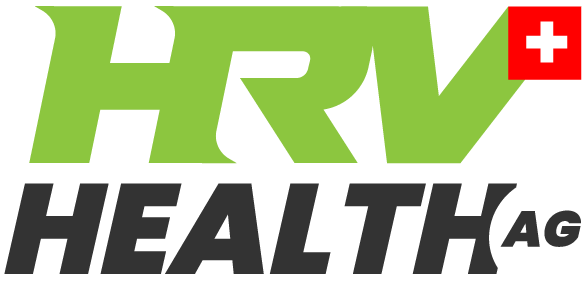Resting heart rate and heart rate variability (HRV) are metrics that give consistent feedback on our health status and fitness.
As we get fitter, our resting heart rate drops. Elite athletes have a resting heart rate in the mid 30s.
Why HRV is important?
The heart beat forms one of the most important indicators of health. The simplest measure is the pulse rate, or the number of beats per minute. It is controlled by the autonomic nervous system (ANS), that part of our body that works automatically, making sure we breath, and our blood keeps pumping.
When our body experiences stress, the heart beats faster in response. As the stress alleviates, the pulse rate returns to normal. But even at a steady pulse rate, let’s say 60 beats per minute (BPM) the time between each beat varies. Measured in milliseconds (ms), instead of being the expected 1000ms between each beat, the inter beat interval (IBI) varies:

An interval of 1140ms may be followed by an interval of 1283, then 1166, then 1247, and 1435….
A higher rate of variability is an indicator of a healthier ANS, and overall a healthier you.
HRV responds to both cognitive and physical stress. While we know that exercise is good, too much is not, and a drop in HRV will tell us that. HRV responds to cognitive stress too, and a drop in HRV provides that warning.
So what’s a good HRV? The answer is one that’s better than yesterday’s. HRV is a relative measure, specific to each person.
It’s important to take the measurement under the same conditions on a daily basis. After a few days, a pattern emerges, giving you an idea of where you are, and where you’re heading.
Blood pressure (BP), another important measure of health, also requires consistent conditions of measurement, providing us with an additional indicator of cognitive stress.
We recommend that users measure HRV and BP simultaneously, usually first thing in the morning.
On days when BP is up, and HRV is down, we know that we’re under cognitive stress, and we can be prepared for it. Better yet, we can do something about it.
On days when HRV is up, we can take advantage, pushing a little harder while we’re exercising, or at work, knowing that we’re ready to perform at our best.
It’s not a surprise that elite athletes have been using HRV for years. It helps them to win, and now it can do the same for you.
Scientists and specialists have been using HRV for decades having had access to the sophisticated (and very expensive) medical equipment required then.
In recent years commercial devices costing under $100, able to measure IBI in milliseconds, have become available. HRV data is collected using either the Polar H9 or H10 chest strap heart rate monitors that link to our iOS and Android apps
The apps collect the HRV readings from the Polar HRM, allowing you to save your data, and giving you your HRV measurement for the day.
Register today, and start measuring your progress towards a fitter, healthier you.
